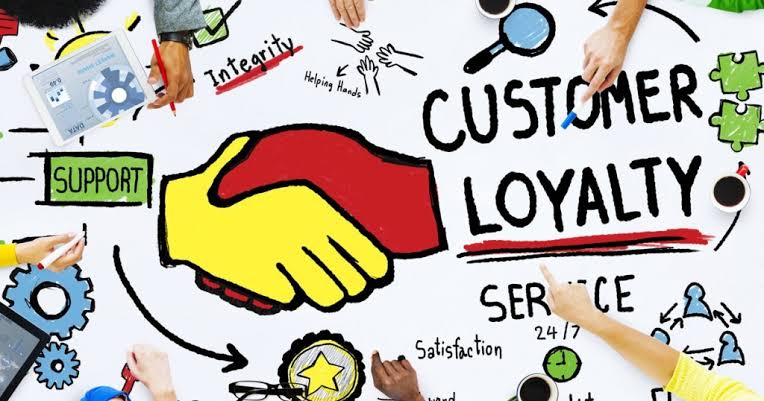In today’s highly competitive business environment, customer loyalty has become one of the most valuable assets for any company. Loyal customers not only provide repeat business but also act as brand advocates, promoting products and services to others. In 2025, the science of building customer loyalty goes beyond traditional sales strategies and involves understanding consumer psychology, leveraging data analytics, and delivering personalized experiences. Businesses that master this art can create lasting relationships that drive long-term growth and profitability.
Understanding Customer Loyalty
Customer loyalty is not just about repeat purchases; it is the emotional connection a customer develops with a brand over time. Loyal customers trust the brand, value its offerings, and often choose it over competitors, even when similar alternatives are available.
Key components of customer loyalty include:
- Satisfaction: Meeting or exceeding customer expectations consistently.
- Trust: Delivering reliable products and transparent services.
- Emotional Connection: Creating positive experiences that resonate with customers.
- Perceived Value: Offering quality, benefits, or experiences that justify their continued engagement.
Businesses that focus on these elements are more likely to transform first-time buyers into long-term loyal customers.
Leveraging Data Analytics and Customer Insights
In 2025, businesses rely heavily on data-driven insights to build loyalty. Collecting and analyzing customer behavior helps brands understand preferences, anticipate needs, and deliver tailored experiences.
The role of data in building loyalty includes:
- Tracking Purchase Patterns: Identifying frequently bought products and services.
- Analyzing Customer Feedback: Learning from reviews and surveys to improve offerings.
- Predictive Analytics: Using AI to forecast customer needs and offer proactive solutions.
- Segmentation and Targeting: Grouping customers based on behavior to create personalized campaigns.
By leveraging data analytics, companies can make informed decisions that foster deeper customer relationships.
Delivering Personalized Experiences
Personalization is a cornerstone of customer loyalty. Customers are more likely to engage with brands that understand their unique needs and preferences.
Effective personalization strategies include:
- Customized Recommendations: Suggesting products or services based on purchase history.
- Tailored Communication: Sending emails or messages that reflect customer interests.
- Exclusive Offers and Rewards: Providing personalized discounts and loyalty benefits.
- Omnichannel Engagement: Maintaining consistency across apps, websites, and physical stores.
Personalized interactions make customers feel valued, which strengthens their emotional attachment to the brand.
Providing Exceptional Customer Service
Outstanding customer service is a critical factor in turning occasional buyers into loyal customers. A single positive or negative interaction can significantly influence a customer’s perception of a brand.
Ways to enhance customer service include:
- Quick Response Times: Addressing inquiries and complaints promptly.
- Proactive Support: Anticipating issues before customers face them.
- Friendly and Knowledgeable Staff: Ensuring that representatives can provide solutions effectively.
- 24/7 Assistance with Technology: Using chatbots and AI to provide around-the-clock support.
When customers feel heard and supported, they are more likely to continue trusting and buying from a brand.
Building Trust and Brand Transparency
Trust is the foundation of customer loyalty. Customers remain loyal to brands that are honest, reliable, and socially responsible.
Strategies for building trust include:
- Transparent Policies: Clear return, refund, and privacy policies.
- Quality Assurance: Consistently delivering products that meet advertised standards.
- Ethical Practices: Supporting sustainability, fair trade, and community initiatives.
- Consistency Across Channels: Ensuring brand messages align with actions.
By being transparent and accountable, businesses create long-term credibility that encourages loyalty.
Rewarding Loyalty Through Programs
Customer loyalty programs are effective tools for retaining customers and encouraging repeat purchases. These programs provide tangible rewards that make customers feel appreciated.
Popular loyalty strategies include:
- Point-Based Rewards: Customers earn points for purchases that can be redeemed for discounts or freebies.
- Tiered Memberships: Offering exclusive benefits to top-tier customers, such as early access to products.
- Referral Incentives: Encouraging loyal customers to invite new ones with rewards.
- Surprise Perks: Sending occasional gifts or personalized thank-you messages.
Well-designed loyalty programs reinforce positive customer experiences and deepen engagement.
Leveraging Technology and Automation
Technology plays a vital role in managing customer relationships efficiently. In 2025, businesses use automation, AI, and digital tools to provide seamless interactions and maintain loyalty.
Examples of technological contributions include:
- CRM Systems: Track and manage customer interactions and preferences.
- AI Chatbots: Provide instant support and personalized recommendations.
- Automated Follow-Ups: Sending thank-you notes or re-engagement messages after purchases.
- Social Media Engagement: Building communities where customers feel connected to the brand.
Automation ensures consistent engagement while freeing human teams to focus on high-value interactions.
Conclusion
The science of building a loyal customer in 2025 requires a combination of psychology, data analytics, personalization, and technology. By creating meaningful experiences, delivering excellent service, maintaining transparency, and rewarding loyalty, businesses can transform one-time buyers into lifelong advocates. Loyal customers not only contribute to revenue growth but also strengthen a brand’s reputation and market presence. Companies that prioritize customer loyalty will thrive in an increasingly competitive and digitally driven world.



